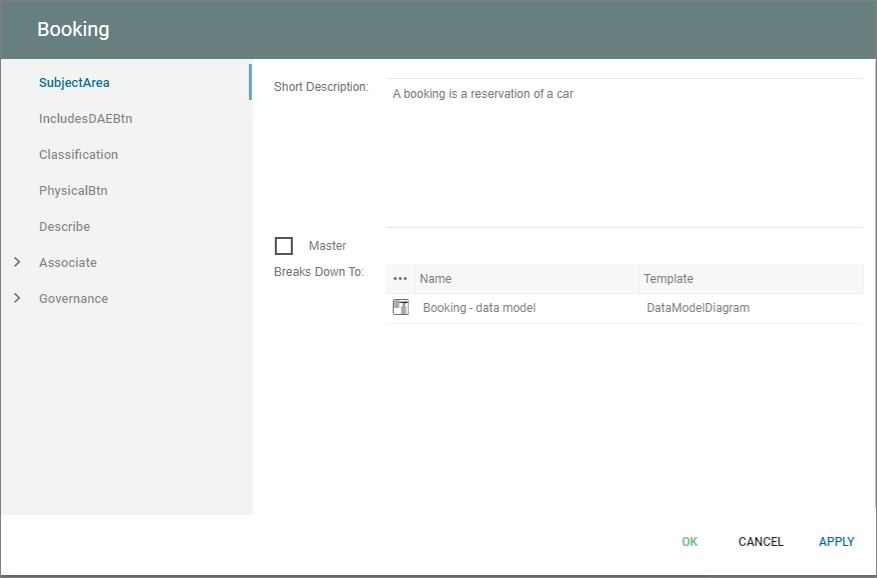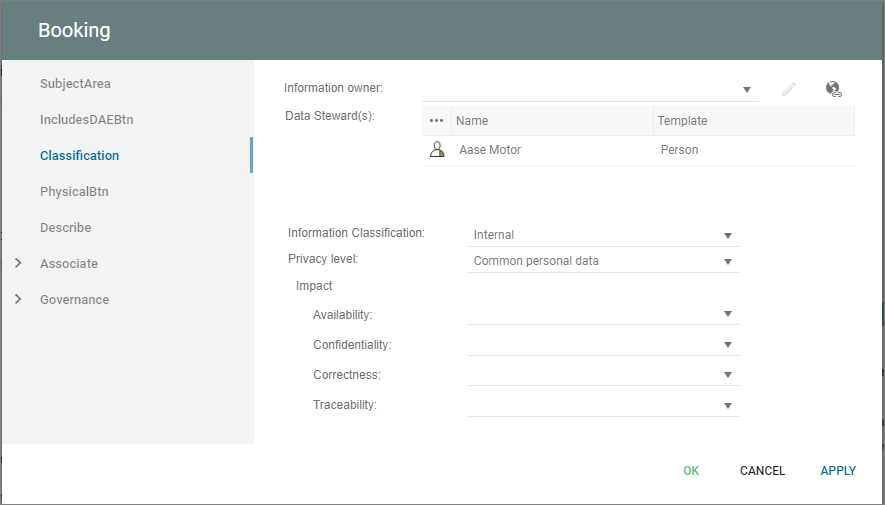Subject Area defines major groupings of data or information concepts.

It can be broken down to a more detailed information modelling diagram(s).
A subject area can be classified:

Templates and model types in the QualiWare platform.
Subject Area defines major groupings of data or information concepts.

It can be broken down to a more detailed information modelling diagram(s).
A subject area can be classified:

A substitute is used on a FreeHandDiagram when the decomposition of entities that are not diagramatic symbol or symbols that are not currently included in the diagram syntax is created.
A graphical replacement for decomposing non-graphical entities.
A graphical indication that the activities are carried out by the same logical (or physical) entity.
Note, it is a legacy template previously used in UML diagrams such as Activity Diagram, in the latest syntax the template Activity Partition is used instead.
A generic grouping mechanism for Information System. A system could be belongs to multiple System Area’s each representing different grouping perspective.
A logical part of a system
System dependency refers to the relationship between different systems or components within a larger system. It shows which components rely on others to function properly, and how changes to one component can affect the others.
For example, if an application depends on a database to store and retrieve data, then a change to the database (such as an upgrade or maintenance) could affect the application’s performance. Similarly, if a server depends on a network to communicate with other servers or clients, then a network outage could disrupt the server’s ability to function.
Understanding system dependency is important for ensuring the reliability and stability of a system, and for planning upgrades or modifications. By identifying which components are critical and which are less important, organizations can prioritize their resources and investments accordingly.
A property from a subclass to a superclass possibly via a SpecializationAspect. A subclass is a subset of a superclass possibly overlapping other subclasses.
A property that characterizes a concept that is always bidirectional by definition.
An aggregation may share its parts with other aggregates. A composition does not share its parts with other aggregates. Composition is a special case of aggregate. A concept aggregation is a special case of ConceptAssociation.